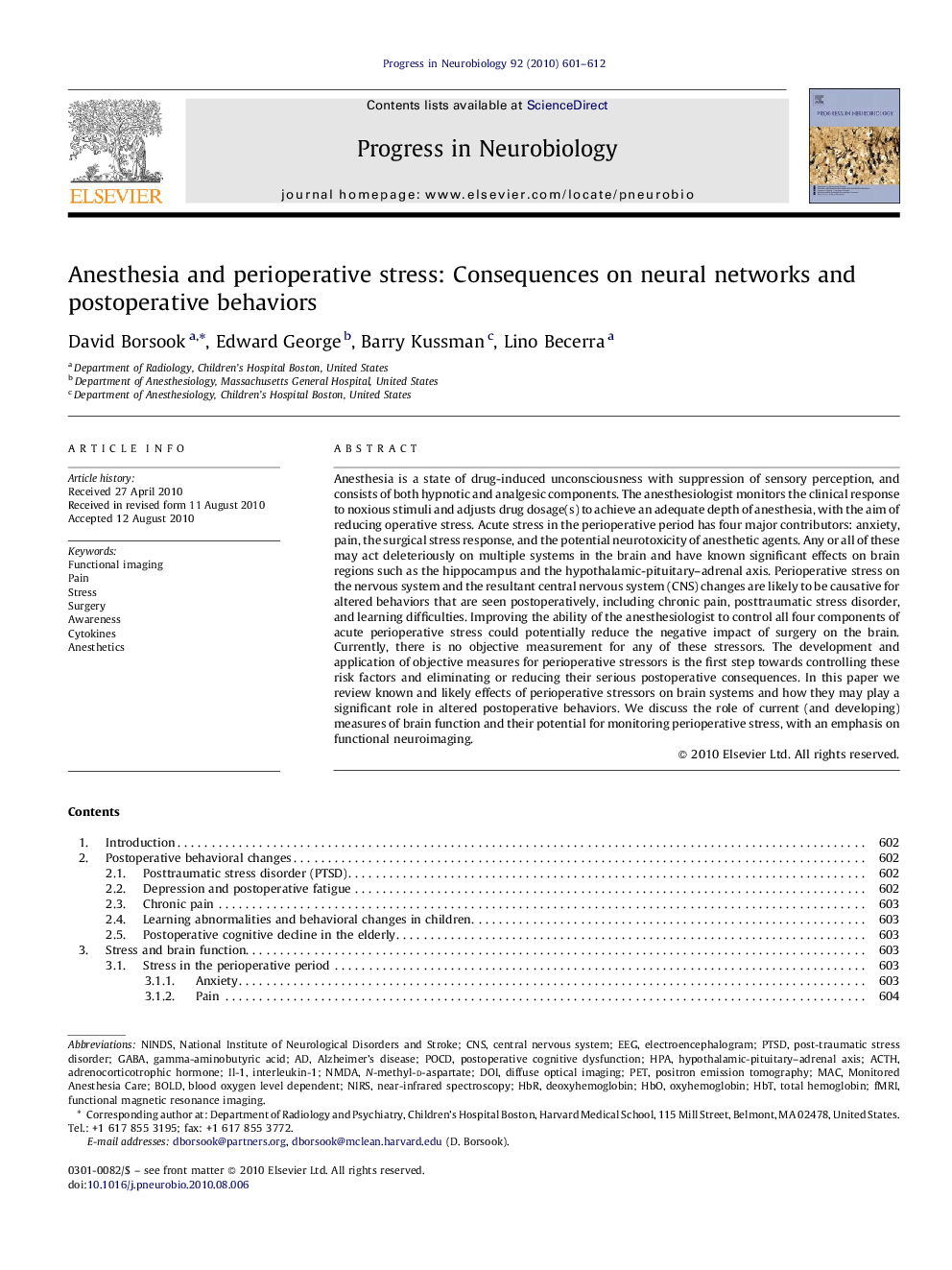| Article ID | Journal | Published Year | Pages | File Type |
|---|---|---|---|---|
| 4353526 | Progress in Neurobiology | 2010 | 12 Pages |
Anesthesia is a state of drug-induced unconsciousness with suppression of sensory perception, and consists of both hypnotic and analgesic components. The anesthesiologist monitors the clinical response to noxious stimuli and adjusts drug dosage(s) to achieve an adequate depth of anesthesia, with the aim of reducing operative stress. Acute stress in the perioperative period has four major contributors: anxiety, pain, the surgical stress response, and the potential neurotoxicity of anesthetic agents. Any or all of these may act deleteriously on multiple systems in the brain and have known significant effects on brain regions such as the hippocampus and the hypothalamic-pituitary–adrenal axis. Perioperative stress on the nervous system and the resultant central nervous system (CNS) changes are likely to be causative for altered behaviors that are seen postoperatively, including chronic pain, posttraumatic stress disorder, and learning difficulties. Improving the ability of the anesthesiologist to control all four components of acute perioperative stress could potentially reduce the negative impact of surgery on the brain. Currently, there is no objective measurement for any of these stressors. The development and application of objective measures for perioperative stressors is the first step towards controlling these risk factors and eliminating or reducing their serious postoperative consequences. In this paper we review known and likely effects of perioperative stressors on brain systems and how they may play a significant role in altered postoperative behaviors. We discuss the role of current (and developing) measures of brain function and their potential for monitoring perioperative stress, with an emphasis on functional neuroimaging.
Research highlights▶ This is an interdisciplinary (Anesthesiology, Radiology and Neurology) overview of the importance of deriving objective measures of brain function in the perioperative period. ▶ The subject is highly topical as it has been exemplified in the covers of your journal on imaging and pain and other journals on awareness. ▶ We have attempted to provide an overview of the topic on how pre-, intra- and postoperative stressors may change brain function. ▶ We describe current methods that may be used to provide not only insight into potential alterations in brain function as a result of perioperative stress, but the importance of providing objective intraoperative measures of brain function, particularly for pain and awareness. ▶ In doing so we believe that the submission may be of interest to Anesthesiologists in particular and other disciplines in general.
